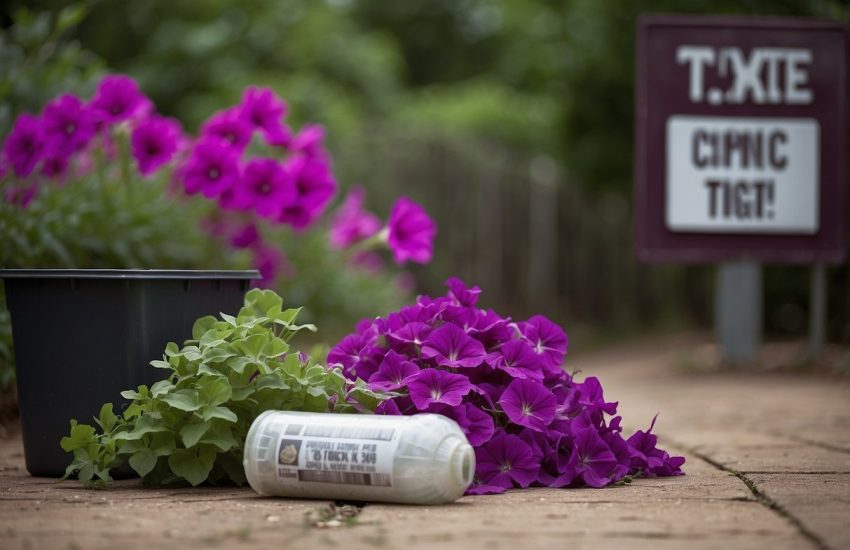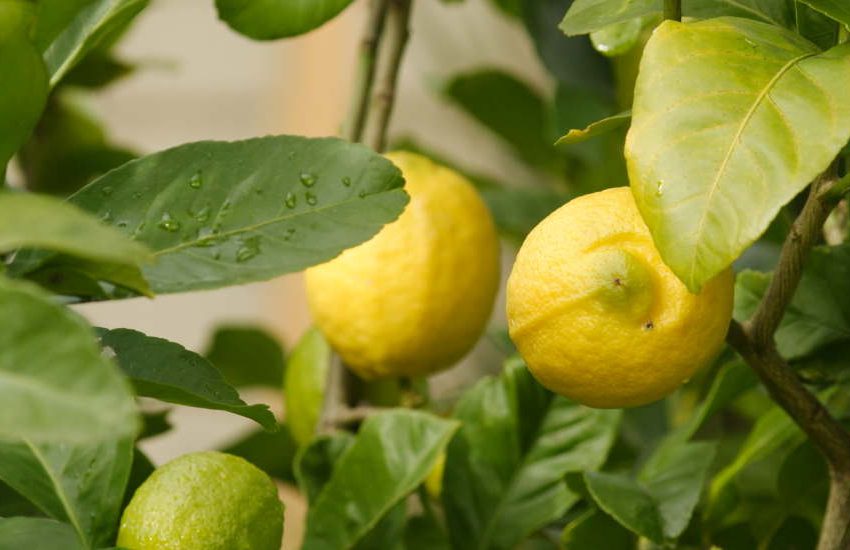Prayer Plant at Night: How to Care for Your Plant During the Dark Hours
The prayer plant, also known as Maranta leuconeura, is a popular houseplant known for its unique foliage and ability to move its leaves up and down throughout the day. However, what many people may not know is that the prayer plant also puts on a show at night.
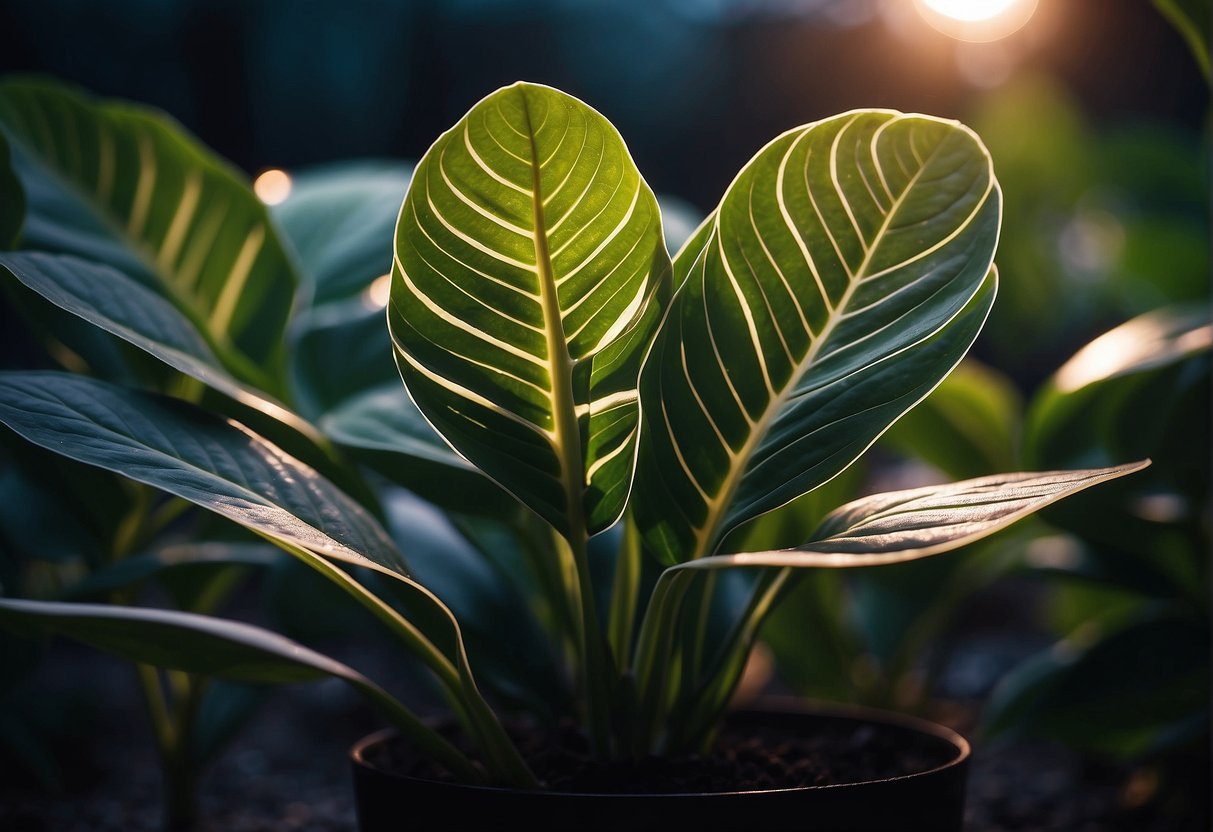
As the sun sets and the room darkens, the prayer plant’s leaves begin to fold up, giving the appearance of hands clasped in prayer. This unique behavior is due to the plant’s circadian rhythm, which is regulated by a biological clock that responds to light and darkness.
Not only is the prayer plant’s nighttime behavior fascinating to observe, but it also serves a practical purpose. By folding up its leaves at night, the plant is able to conserve moisture and protect itself from potential predators. Overall, the prayer plant’s unique nighttime behavior is just one of the many reasons why it is a beloved addition to any plant lover’s collection.
Understanding Prayer Plants
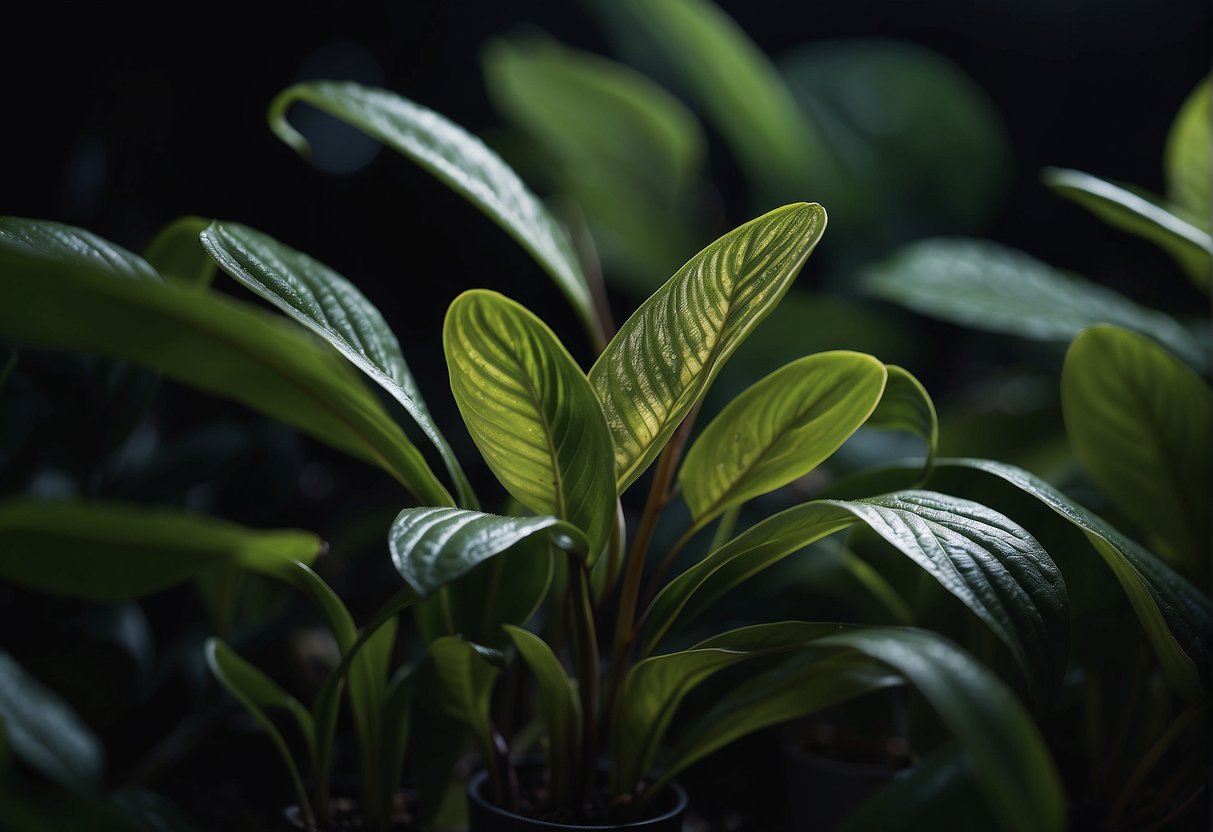
Prayer plants, also known as Maranta leuconeura, are a popular houseplant species known for their unique nyctinastic movement. The Maranta leuconeura species is part of the Marantaceae family, which includes other well-known houseplant species such as stromanthe and calatheas.
Nyctinastic Movement
The nyctinastic movement of prayer plants refers to their ability to fold their leaves upward at night, resembling praying hands. This movement is caused by the plant’s sensitivity to light and is a natural response to changes in its environment. The leaves of prayer plants are also known to move in response to touch, making them an interactive houseplant.
Maranta Leuconeura Species
The Maranta leuconeura species of prayer plant is known for its striking foliage, which features bold patterns of green and red veins. The leaves are also slightly fuzzy to the touch, adding to the plant’s unique texture. Prayer plants prefer bright, indirect light and thrive in humid environments.
Marantaceae Family
Prayer plants belong to the Marantaceae family, which is known for its diverse range of leaf shapes, colors, and patterns. Many species in this family, including prayer plants, are popular houseplants due to their unique foliage and low maintenance requirements. The Marantaceae family is native to tropical regions of Central and South America and Africa.
Overall, prayer plants are a fascinating and visually striking houseplant species that are sure to add interest to any indoor space. Their unique nyctinastic movement and striking foliage make them a popular choice among plant enthusiasts.
Optimal Growing Conditions

Light Requirements
The Prayer Plant prefers bright, indirect light. Direct sunlight can scorch its leaves, while too little light can cause its leaves to lose their variegation. If the plant is not receiving enough light, it may not produce flowers. If the plant is not getting enough light, it is recommended to use a grow light.
Watering Essentials
The Prayer Plant likes to be kept moist but not overly wet. Overwatering can cause root rot, while underwatering can cause the leaves to wilt. It is recommended to water the plant once a week, allowing the soil to dry out slightly between waterings. It is also important to use room-temperature water, as cold water can shock the plant.
Temperature and Humidity
The Prayer Plant prefers temperatures between 65-75°F (18-24°C). It is important to keep the plant away from cold drafts and air conditioning vents, as this can cause its leaves to curl and brown. The plant also prefers high humidity levels, so it is recommended to use a humidifier or place a tray of water near the plant to increase humidity.
Overall, the Prayer Plant is a relatively easy plant to care for as long as its basic needs are met. By providing it with the right amount of light, water, temperature, and humidity, it can thrive and add a touch of natural beauty to any room.
Nighttime Care and Behavior
The Prayer Plant is known for its unique foliage display, with leaves that fold up at night and unfold during the day. To ensure that the plant remains healthy and vibrant, it is important to provide it with proper nighttime care.
Leaf Folding at Night
At night, the Prayer Plant folds its leaves upward, giving it a unique appearance. This behavior is a natural response to darkness, as the plant’s leaves are sensitive to light. As a result, it is important to ensure that the plant is not exposed to too much light during the nighttime hours.
Lighting During Darkness
To maintain the Prayer Plant’s unique foliage display, it is important to provide it with proper lighting during the nighttime hours. While the plant does require some darkness to trigger its leaf folding behavior, it also needs some light to remain healthy.
One option is to provide the plant with indirect light from a nearby lamp or streetlight. This will provide enough light to keep the plant healthy without triggering its leaf folding behavior. Alternatively, you can use a grow light to provide the plant with the necessary light it needs to thrive during the nighttime hours.
Overall, providing proper nighttime care for your Prayer Plant is essential to ensure that it remains healthy and vibrant. By understanding its leaf folding behavior and providing it with the right lighting, you can enjoy this unique plant for years to come.
Common Issues and Solutions
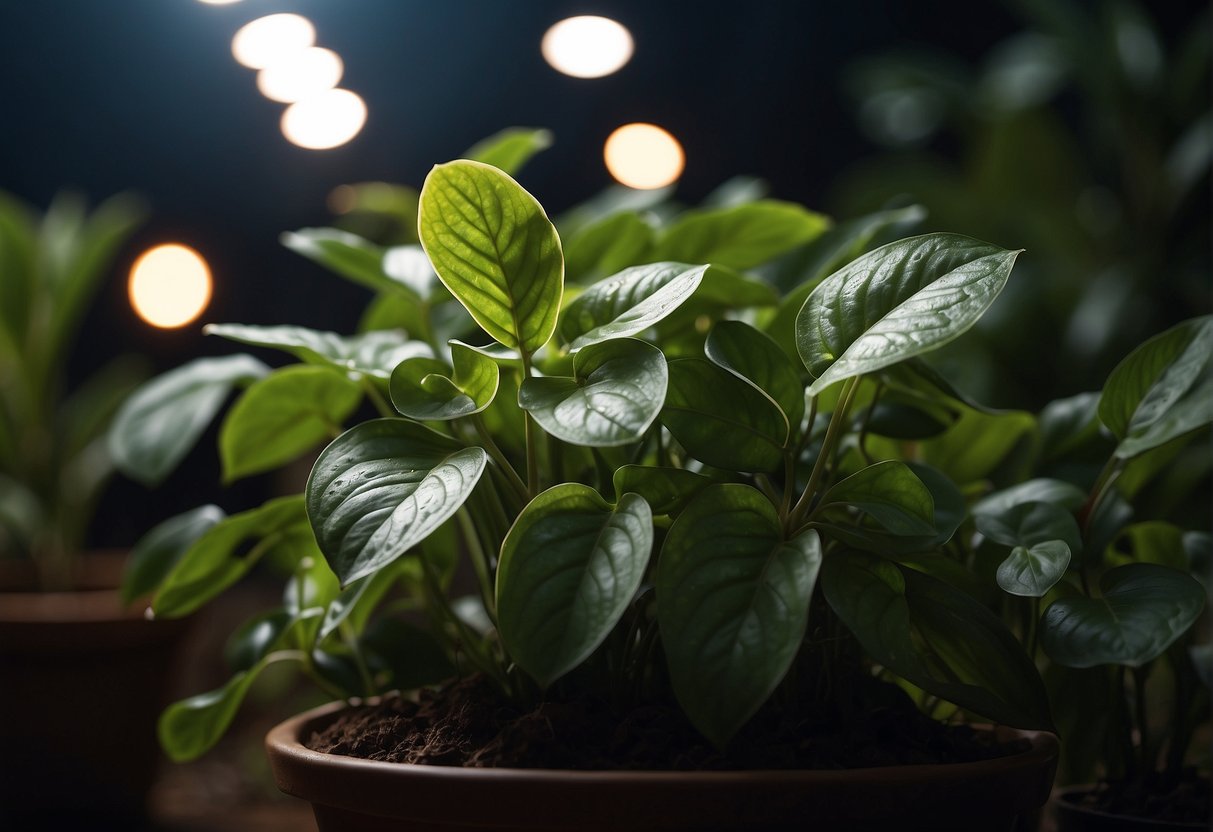
Pest Management
Prayer plants are generally hardy and resistant to pests, but they can occasionally fall prey to spider mites and mealybugs. Spider mites are tiny pests that can cause yellowing or stippling of the leaves, while mealybugs leave a white, waxy residue on the plant. To combat these pests, it is recommended to wipe the leaves down with a damp cloth or spray them with a neem oil solution. Neem oil is a natural insecticide that can be very effective against a wide range of pests.
Disease Prevention
Prayer plants are susceptible to fungal diseases, particularly if they are overwatered or if there is poor air circulation around the plant. To prevent fungal issues, it is important to ensure that the plant is not overwatered and that there is good drainage in the pot. If the plant does develop a fungal issue, it may be necessary to prune affected leaves and treat the plant with a fungicide.
Watering Problems
Overwatering and underwatering are common issues that can affect prayer plants. Overwatering can lead to root rot, which can be fatal to the plant. To prevent overwatering, it is important to ensure that the pot has good drainage and that the plant is not sitting in standing water. Underwatering can cause the leaves to wilt and dry out. To prevent underwatering, it is important to water the plant regularly and to ensure that the soil does not dry out completely between waterings.
Overall, maintaining a healthy prayer plant requires attention to watering, pest management, and disease prevention. By following these simple guidelines, you can enjoy a beautiful and healthy prayer plant for years to come.
Maintenance and Propagation
Pruning and Cleaning
Prayer plant at night requires minimal pruning, but regular cleaning is necessary to keep the leaves healthy. Prune any yellow or brown leaves using sharp, clean scissors. Remove any debris or dust from the leaves using a soft, damp cloth. This will help prevent pests and diseases from infesting the plant.
Repotting and Soil
Prayer plant at night prefers well-draining soil and should be repotted every two years. Use a potting mix that contains perlite and peat moss to improve drainage. When repotting, gently loosen the roots and remove any dead or damaged roots. Place the plant in a slightly larger pot and add fresh soil.
Propagation Techniques
Prayer plant at night can be propagated through divisions or stem cuttings. To propagate through divisions, gently remove the plant from its pot and separate the roots into smaller sections. Each section should have at least one healthy stem and root system. Plant each division in a pot with fresh soil and water thoroughly.
To propagate through stem cuttings, take a 4-inch stem cutting from the mother plant and remove the lower leaves. Dip the cut end in rooting hormone and plant in a pot with moist soil. Cover the pot with a plastic bag to create a humid environment and place in a bright, indirect light. Keep the soil moist and roots should develop in about 4-6 weeks.
Overall, prayer plant at night is a low-maintenance plant that can be easily propagated. With proper care and maintenance, it will reward its owner with beautiful foliage and occasional blooms.
Frequently Asked Questions
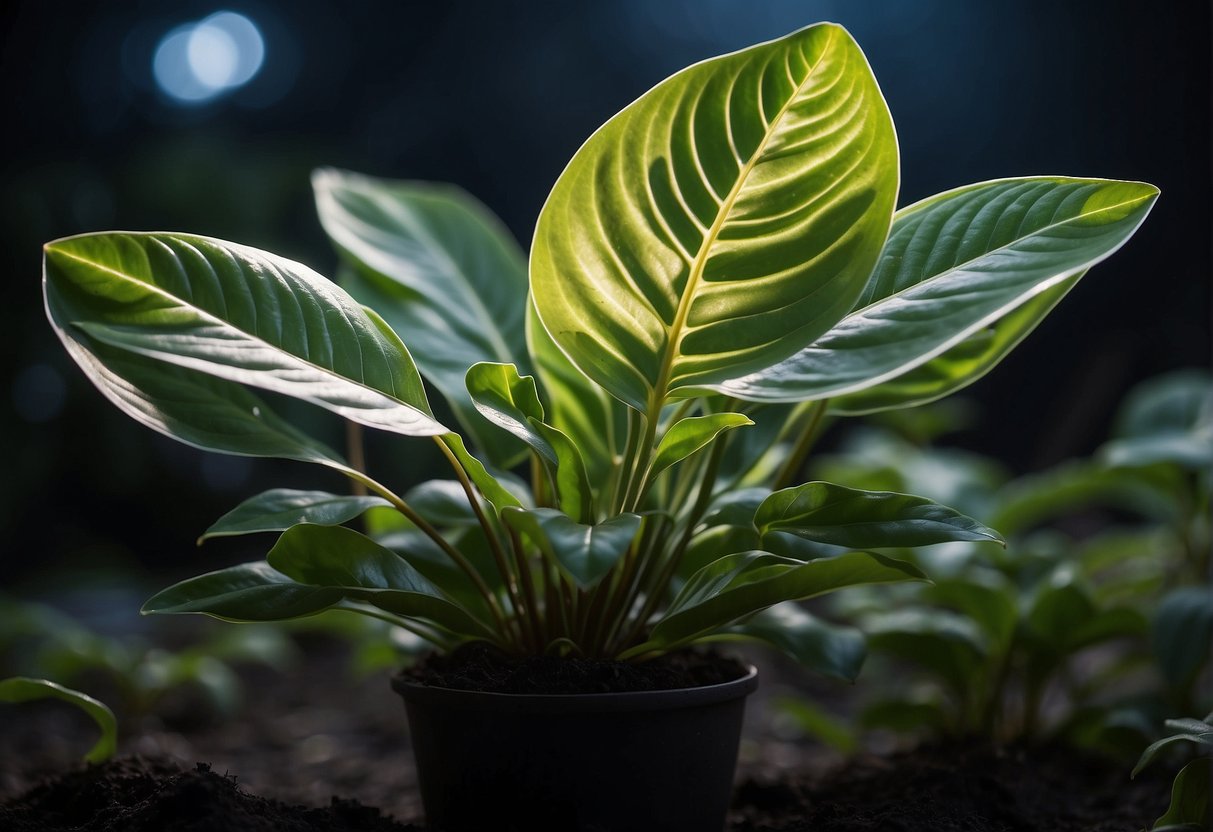
How do you care for a prayer plant indoors?
Prayer plants thrive in bright, indirect light and moist soil. It’s important to keep the soil consistently moist but not waterlogged. They also prefer higher humidity levels, so misting the leaves or using a humidifier can be beneficial. Fertilize the plant every two weeks during the growing season with a balanced fertilizer.
What causes prayer plant leaves to curl and how can it be fixed?
Curling leaves can be a sign of underwatering or low humidity. Make sure to keep the soil consistently moist and increase the humidity levels around the plant. If the leaves are curling and turning brown, it may be a sign of too much direct sunlight. Move the plant to a spot with more indirect light.
Can prayer plants thrive in low light conditions?
While prayer plants prefer bright, indirect light, they can still survive in low light conditions. However, they may not produce as much new growth or vibrant colors on their leaves. It’s important to still keep the soil moist and provide adequate humidity levels.
What is the significance of a prayer plant’s leaves closing at night?
The prayer plant’s leaves close at night as part of their natural circadian rhythm. This is a way for the plant to conserve moisture and protect itself from potential predators. It’s a fascinating adaptation that has made prayer plants a popular choice for indoor plant enthusiasts.
Are prayer plants known to require high maintenance?
Prayer plants are relatively low-maintenance plants, but they do require consistent care. Keeping the soil moist, providing adequate humidity levels, and fertilizing regularly are all important for the health of the plant. However, with proper care, they can thrive and make beautiful additions to any indoor space.
What should you do if a prayer plant starts drooping or closing during the day?
Drooping or closing leaves during the day can be a sign of underwatering or too much direct sunlight. Check the soil moisture levels and adjust the plant’s location to a spot with more indirect light. If the leaves are still drooping, consider misting the plant or using a humidifier to increase the humidity levels around it.

